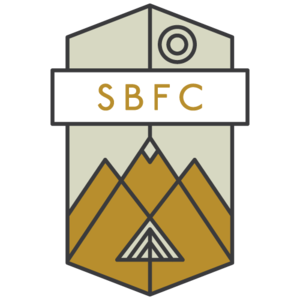Ryan Ghelfi
October 23, 2025
I’ve served as the executive director of SBFC for just over 2.5 years, and I’ve had the pleasure of getting to know many of the current and former Selway-Bitterroot and Frank Church-River of No Return Wilderness staff at the US Forest Service.
One sentiment that I’ve heard echoed by numerous wilderness retirees is that USFS wilderness and trail crews back in the day were much more robust. One retiree said “we used to have 60 people working on trails and Wilderness on the Forest back in 1975,” and yet another told me that “I had 20 people working for me in the Wilderness and Trails shop on my district back in 2001.” These numbers are not reflective of crews today. While the quality of our USFS partners is top-notch, the quantity is not nearly the same.
Hearing those anecdotal numbers from USFS retirees paints a vivid picture for me. All told, it’s easy to see why we are facing such a difficult situation on the ground with trails becoming more challenging to maintain each year, intervals between maintenance lengthening, rangers monitoring sites and areas less often than they once did, and a growing backlog of deferred maintenance (according to a 2018 report, the USFS trail repair backlog is $279 million). The reality is, the shrinking number of staff dedicated to these wilderness areas is no match for the (not shrinking) acreage.
While I dream about what a fully staffed USFS trail crew in the last century could have accomplished, that is just it… a dream. Meanwhile, SBFC and other partner organizations are here working shoulder-to-shoulder with our USFS partners, accomplishing work on the ground. The USFS does not raise private funds, but we can, and thanks to donors like you, we are able to send hundreds of people into the wilderness each summer to get the job done.
This year, we hired eight full-time seasonal crew leaders/assistants, each with a breadth of experience in the wilderness and trails world. We brought on 13 Wilderness Ranger Fellows, each of whom contributed hundreds of hours of wilderness trail work and became highly adept at wilderness skills. Hundreds of volunteers came from across the country to spend their days performing manual labor on the trails and their nights camped under the stars, and teens from Idaho and Montana likewise shared their energy via trail work while learning about wilderness, backpacking, and the like.
To further support these wilderness areas and address emerging needs, we have expanded our programs in new and exciting ways. This summer, in partnership with the Salmon-Challis National Forest, we hired River Checkers and River Rangers on the Middle Fork and Main Salmon Rivers to ensure continued wilderness stewardship in these heavily visited river corridors. We also took on critical work in the Sawtooth and Gospel Hump Wilderness areas, meeting the urgent need for more boots on the ground. Meanwhile, our Youth Wilderness Program continues to grow, cultivating the next generation of wilderness leaders so that these magnificent wild places have future stewards.
So, what does the future look like? I can’t say. My crystal ball is hazy, just like everyone’s. What I do know is that the Selway-Bitterroot and Frank Church-River of No Return Wilderness areas are essential. We need people out there working in these places, keeping our trails and connection to the country strong and sustainable. People want to be out here doing this work, grueling, exhausting, and unglamorous as it might be. I don’t know if we’ll ever have 60 people working seasonally on wilderness and trails on any given forest in the future, like we did in the past. But SBFC will be here, converting your donations into direct impact for our beloved wilderness areas.
Our 2025 season has been a resounding success. Stay tuned for all the details about all the work that was accomplished in the coming weeks in The Wildest Place newsletter and online. We were able to be successful this season because of donors like YOU.
As always, I’d love to hear your thoughts and comments. Email me anytime!

